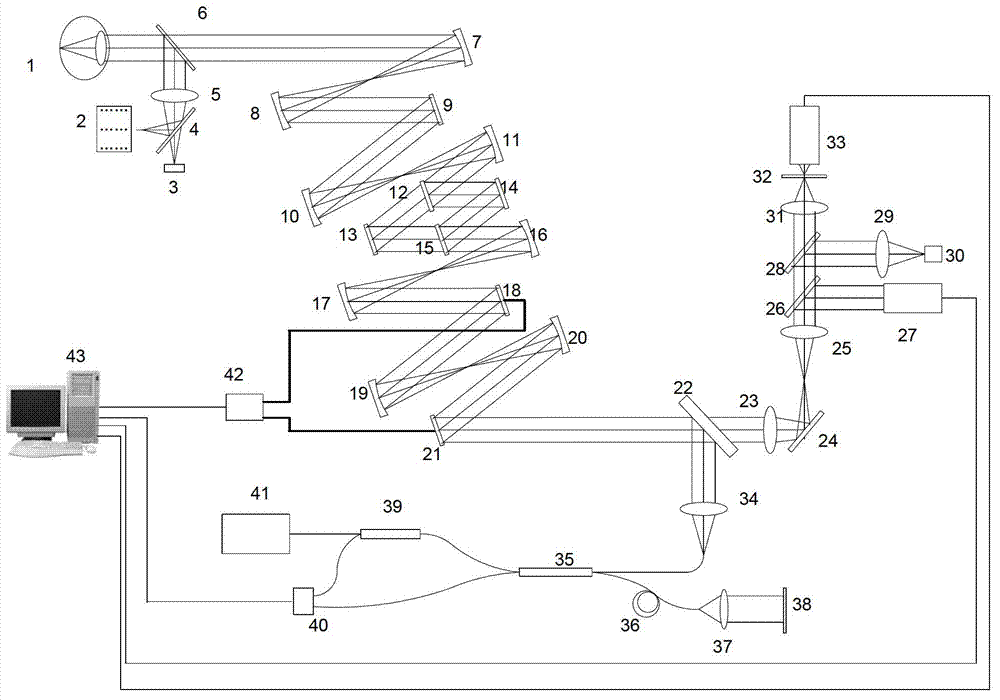Retina three-dimensional imaging device based on double wavefront correctors for human eyes
A wavefront corrector and three-dimensional imaging technology, which is applied in ophthalmoscopes, eye testing equipment, medical science, etc., can solve the problem of low longitudinal spatial resolution of images, the influence of imaging resolution, and the difficulty of aberration correction range to meet the needs of different groups of people. Problems such as the need for error correction, to achieve the effect of improving the correction ability and practicality
- Summary
- Abstract
- Description
- Claims
- Application Information
AI Technical Summary
Problems solved by technology
Method used
Image
Examples
Embodiment Construction
[0021] The technical solution of the present invention will be described in detail below in conjunction with the accompanying drawings and in the best mode of implementation:
[0022] A three-dimensional imaging device for the human retina based on a dual-wavefront corrector includes an adaptive optics component, a fundus monitoring imaging and optotype component, a confocal scanning component, and an optical coherence tomography component, which can realize adaptive optics laser scanning confocal imaging and adaptive optical coherence tomography.
[0023] The adaptive optics component includes a wavefront sensor 27, dual wavefront correctors 18 and 21, and a series of spherical mirrors, wherein the spherical mirror 19 and the spherical mirror 20 form a beam-shrinking and expanding system with matched apertures. The wavefront sensor 27 detects the light beam with wavefront aberration emitted from the human eye to obtain the low-order aberration and high-order aberration of the...
PUM
 Login to View More
Login to View More Abstract
Description
Claims
Application Information
 Login to View More
Login to View More - Generate Ideas
- Intellectual Property
- Life Sciences
- Materials
- Tech Scout
- Unparalleled Data Quality
- Higher Quality Content
- 60% Fewer Hallucinations
Browse by: Latest US Patents, China's latest patents, Technical Efficacy Thesaurus, Application Domain, Technology Topic, Popular Technical Reports.
© 2025 PatSnap. All rights reserved.Legal|Privacy policy|Modern Slavery Act Transparency Statement|Sitemap|About US| Contact US: help@patsnap.com

